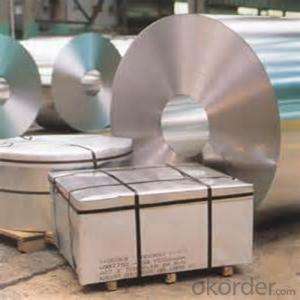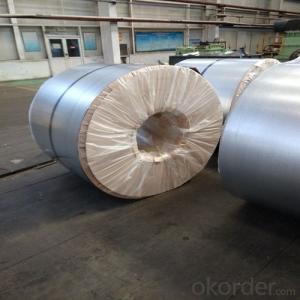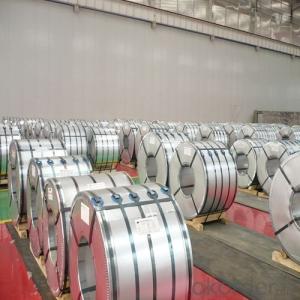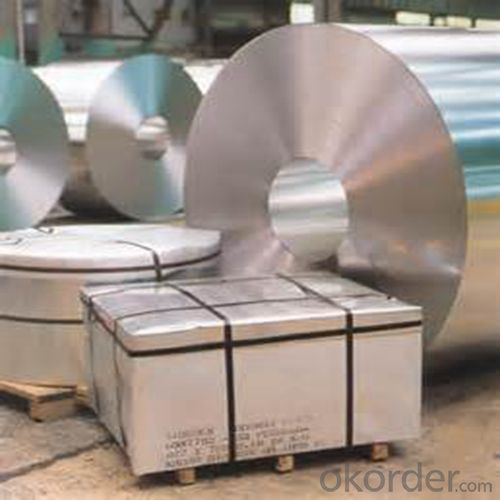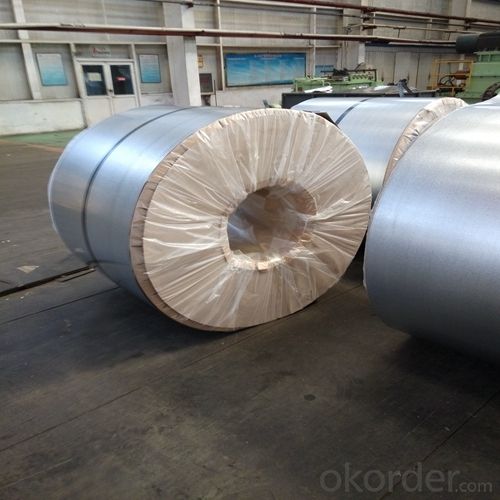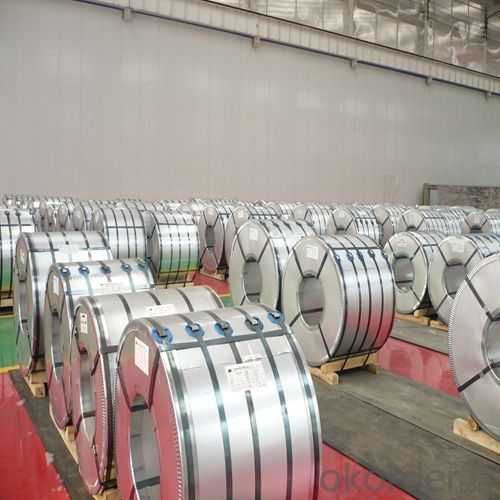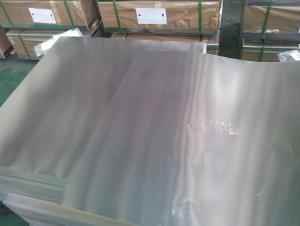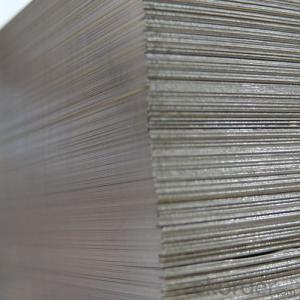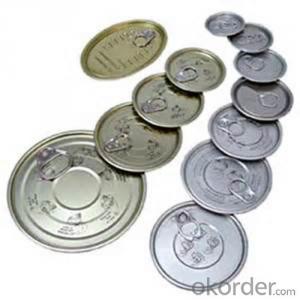Tinplate ETP of High Quality for Metal Containers 0.38 T3BA
- Loading Port:
- Tianjin
- Payment Terms:
- TT OR LC
- Min Order Qty:
- 50 m.t.
- Supply Capability:
- 10000 m.t./month
OKorder Service Pledge
OKorder Financial Service
You Might Also Like
1.Structure of Tinplate ETP of High Quality for Metal Containers 0.38 T3BA Description
Electrolytic Tinplate, is one thin steel sheet with a coating of tin applied by electrolytic deposition. Tinplate made by this process is essentially a sandwich in which the central core is strip steel. This core is cleaned in a pickling solution and then fed through tanks containing electrolyte, where tin is deposited on both sides. As the strip passes between high-frequency electric induction coils, it is heated so that the tin coating melts and flows to form a lustrous coat.
2.Main Features of the Tinplate ETP of High Quality for Metal Containers 0.38 T3BA
Appearance – Tinplate is characterized by its beautiful metallic luster. Products with various kinds of surface roughness are produced by selecting the surface finish of the substrate steel sheet.
Paintability and printability – Tinplates have excellent paintability and printability. Printing is beautifully finished using various lacquers and inks.
Formability and strength – Tinplates have got very good formability and strength. By selecting a proper temper grade, appropriate formability is obtained for different applications as well as the required strength after forming.
Corrosion resistance – Tinplate has got good corrosion resistance. By selecting a proper coating weight, appropriate corrosion resistance is obtained against container contents. Coated items should meet 24 hour 5 % salt spray requirement.
Solderability and weldability – Tinplates can be joined both by soldering or welding. These properties of tinplate are used for making various types of cans.
Hygienic – Tin coating provides good and non toxic barrier properties to protect food products from impurities, bacteria, moisture, light and odours.
Safe – Tinplate being low weight and high strength makes food cans easy to ship and transport.
Eco friendly – Tinplate offers 100 % recyclability.
Tin is not good for low temperature applications since it changes structure and loses adhesion when exposed to temperatures below – 40 deg C.
3.Tinplate ETP of High Quality for Metal Containers 0.38 T3BA Images
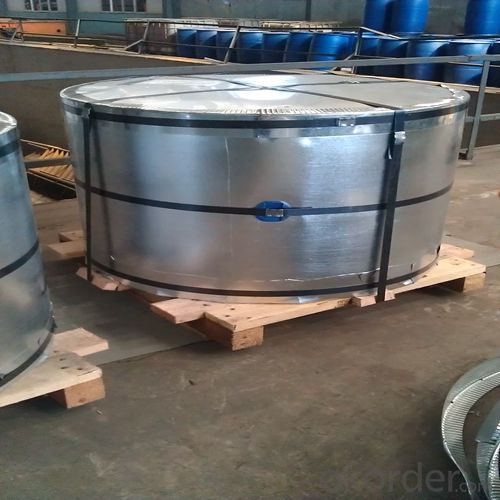
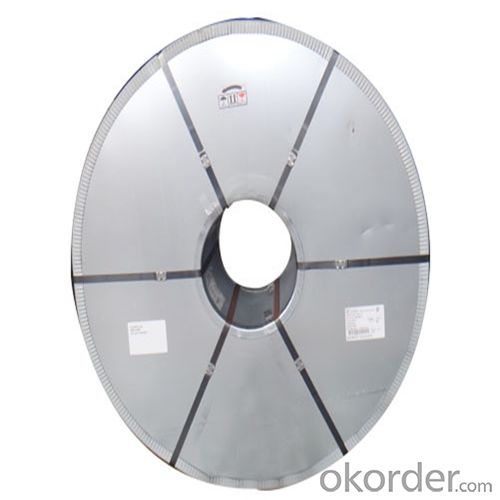
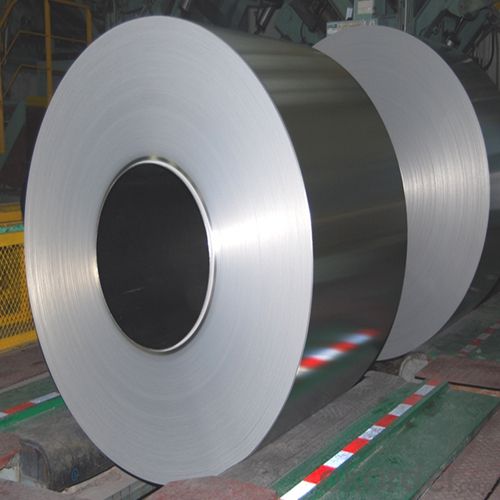
4.Tinplate ETP of High Quality for Metal Containers 0.38 T3BA Specification
Standard: ISO 11949 -1995
Material: MR
Thickness:0.38mm
Width: 600mm -1150mm
Temper: T3
Annealing: BA
Coil Inner Diameter: 508mm
Weight: 6-10 tons/coil 1~1.7 tons/sheets bundle
Passivation:311
Oil: DOS
Surface: Finish
5.FAQ of Tinplate ETP of High Quality for Metal Containers 0.38 T3BA
- How are the tinplates specified?
The tinplates are specified as per the steel base, extent of tempering, the coating weight, annealing method and the surface finish.
- How many types there are for base steels?
The base steels are of three types: Type MR, L, D
- Q: How is tinplate affected by exposure to light?
- Tinplate is not significantly affected by exposure to light as it is a durable material that does not easily degrade or change its properties when exposed to light.
- Q: How does tinplate handle exposure to light?
- Tinplate is generally resistant to light exposure and does not undergo significant changes in its properties when exposed to light.
- Q: How does tinplate contribute to the conductivity of electrical components?
- Tinplate contributes to the conductivity of electrical components by providing a thin layer of tin coating on the surface, which enhances the flow of electric current and reduces resistance. This tin coating acts as a protective barrier against corrosion, ensuring long-term conductivity and preventing the electrical components from deteriorating over time.
- Q: What are the disadvantages of using tinplate?
- One disadvantage of using tinplate is its relatively high cost compared to other materials. Additionally, tinplate can be prone to corrosion if not properly coated or maintained. It is also less flexible than some alternative materials, making it less suitable for certain applications. Lastly, tinplate can be challenging to recycle due to the complexity of separating the tin coating from the steel, which can contribute to environmental concerns.
- Q: How is tinplate stored?
- Tinplate is typically stored in dry and well-ventilated areas to prevent moisture and rusting. It should be stacked on pallets or shelves, away from direct sunlight and sources of heat. Additionally, it is important to ensure proper labeling and organization to facilitate easy access and inventory management.
- Q: How does tinplate perform in terms of tamper resistance?
- Tinplate performs well in terms of tamper resistance. Its strong and durable nature makes it difficult to tamper with or manipulate without leaving visible signs of tampering. Additionally, tinplate can be sealed tightly, making it hard for unauthorized individuals to access the contents without clear evidence of tampering.
- Q: How does tinplate packaging contribute to product tamper resistance?
- Tinplate packaging contributes to product tamper resistance by providing a strong and durable barrier that is difficult to breach without leaving visible signs of tampering. Its robust construction and tamper-evident features such as seals, closures, or breakable seals make it challenging for unauthorized individuals to access the product undetected.
- Q: How does tinplate perform in terms of temperature resistance?
- Tinplate performs well in terms of temperature resistance, as it can withstand high temperatures without warping or losing its structural integrity.
- Q: What are the advantages of using tinplate for medical packaging?
- There are several advantages of using tinplate for medical packaging. Firstly, tinplate is highly durable and provides excellent protection to the packaged medical products. It is resistant to corrosion, ensuring the integrity and safety of the contents. Secondly, tinplate is lightweight yet sturdy, making it easy to handle and transport. This reduces shipping costs and prevents damage during transit. Additionally, tinplate is impermeable to moisture, oxygen, and light, providing a high level of product protection and extending the shelf life of medical supplies. Lastly, tinplate is recyclable and has a low environmental impact, making it a sustainable choice for medical packaging.
- Q: What are the common challenges in processing tinplate?
- Some common challenges in processing tinplate include ensuring proper coating adhesion, preventing tinplate corrosion, managing the formation of tin whiskers, and achieving consistent thickness and flatness in the tinplate sheets. Other challenges may include controlling the tinplate's surface quality, preventing contamination during processing, and ensuring proper handling and storage to avoid damage.
Send your message to us
Tinplate ETP of High Quality for Metal Containers 0.38 T3BA
- Loading Port:
- Tianjin
- Payment Terms:
- TT OR LC
- Min Order Qty:
- 50 m.t.
- Supply Capability:
- 10000 m.t./month
OKorder Service Pledge
OKorder Financial Service
Similar products
Hot products
Hot Searches
Related keywords
